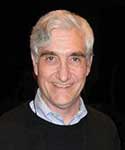James Hollenhorst
Past Treasurer

He received his B.S. in Physics from the University of Minnesota and his M.S. and Ph.D. in Physics from Stanford University. His thesis work initiated a flood of research on "squeezed states" named after the "squeeze operator," which he introduced. He spent eleven years at Bell Laboratories, where his team developed the avalanche photodiodes that became a mainstay of AT&T's network. His team also developed pump lasers that enabled the world's first optically-amplified submarine cable.
The following 25 years were spent at HP and its spin-off, Agilent, where he led research spanning a wide range of disciplines. A notable accomplishment was his initiation and early leadership of the development of FBAR filter technology, arguably the most successful MEMS technology ever developed and a key enabler of compact smart phones. Agilent's spin off, Avago, is currently shipping billions of FBAR filters per year and that volume is growing rapidly.
In addition to his financial experience in leading research organizations, he received training in finance and accounting in executive development programs at AT&T and HP and through executive training at the Kellogg School of Management. He is currently serving as chair of the audit committee for a biotech startup, Gen9, for which he is a board member and former chair of the compensation committee.
Hollenhorst is a Fellow of APS and IEEE. He served two terms on the governing board of the American Institute of Physics, as Chair of the Physics Today Advisory Committee, and as Chair of the Corporate Associates. He is currently serving as chair of the search committee for the new Editor-in-Chief of Physics Today. He has served on numerous prize committees for the AIP, APS, EPS, and IEEE, as well as serving on the selection committee for the National Medal of Technology and Innovation under two presidential administrations. He served on numerous industrial and academic advisory committees including the California Nanosystems Institute, the Stanford Center for Integrated Systems, the Berkeley Wireless Research Center, and the Center for Analytical Biotechnology.
